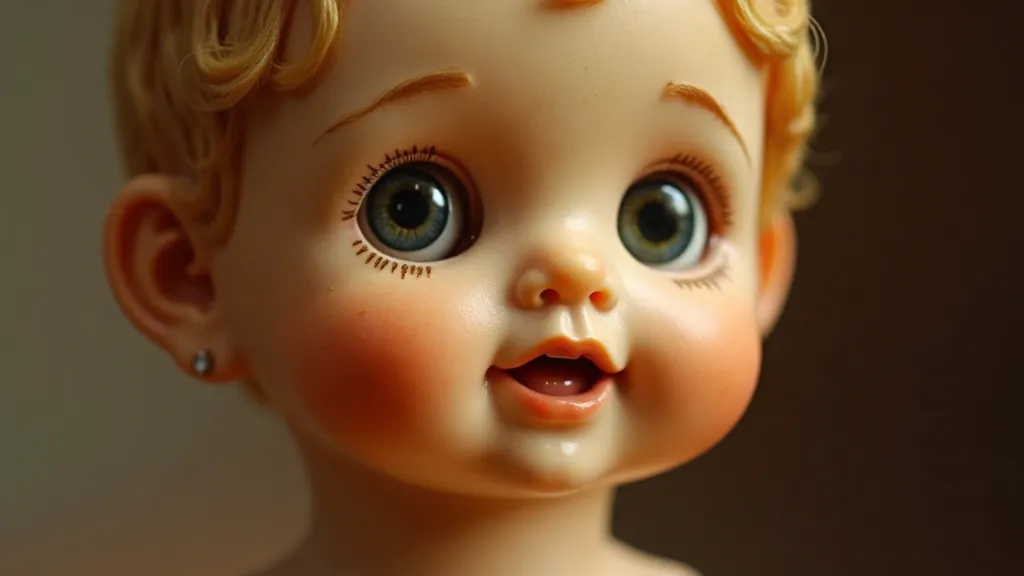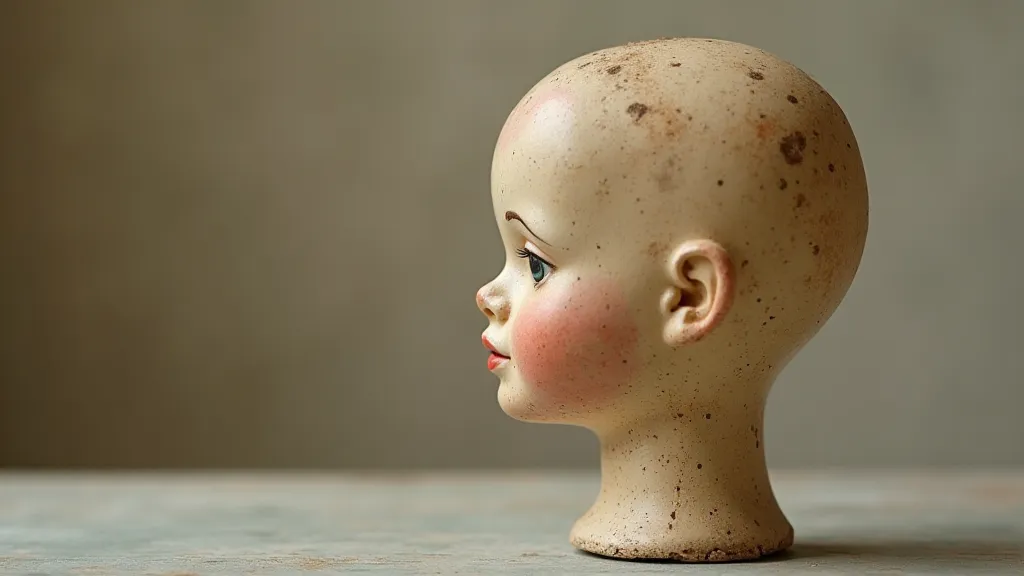Beyond Porcelain and Cloth: The Unsung Materials in Antique Doll Construction
The world of antique doll collecting often conjures images of delicate porcelain faces, meticulously stitched cloth bodies, and the soft gleam of mohair wigs. And rightly so – these materials are cornerstones of the craft. But what about the materials that lie a little further from the spotlight? The ones that whisper tales of innovation, experimentation, and the sheer resourcefulness of toy makers in different eras? Let’s delve into the fascinating, often overlooked, materials that gave life to countless antique dolls, revealing a richer, more complex picture of toy history.
My own journey into collecting started with a fascination for the tangible connection to the past. Holding a doll crafted decades, even a century or more ago, is a remarkable experience. It's not just about admiring its appearance; it's about feeling the echo of the hands that shaped it, the laughter of the child who cherished it, and the perseverance of the craftsperson who poured their skills into its creation. Often, the material itself tells a story even more compelling than the doll's charming face.
Gutta-Percha: The Early Plastic Revolution
Before the advent of readily available plastics, toy makers experimented with natural materials. One such marvel was gutta-percha. Derived from the latex of the Palaquium tree, native to Southeast Asia, gutta-percha was popular in the mid-19th century as a substitute for rubber and ivory. Its durability, waterproof nature, and ability to be molded made it ideal for doll heads, limbs, and even entire bodies. These dolls, often called “compo-percha” dolls (because they were often combined with composition – more on that later!), are relatively rare today.

The appeal of gutta-percha dolls lies in their unique aesthetic. They often have a softer, more rounded appearance compared to porcelain dolls, and the material itself possesses a certain warmth. They were a particularly affordable alternative to porcelain, making them accessible to a broader range of families. However, gutta-percha is susceptible to drying and cracking over time, and their scarcity adds to their collector value. Their presence in antique doll collections provides a snapshot of ingenuity in the Victorian era, a time when readily available resources were essential for successful manufacturing.
Composition: The Versatile and Complex Material
Moving into the late 19th and early 20th centuries, composition dolls became incredibly popular. But what *is* composition? It's not a single material, but rather a mixture – typically a blend of sawdust, glue (often casein or animal hide), cotton flock, and sometimes resin or other binding agents. The exact recipe varied by manufacturer, contributing to the subtle differences we see in the appearance and durability of antique composition dolls.
What made composition so advantageous was its versatility. It could be molded easily, painted vividly, and given a remarkable level of detail. The resulting dolls could mimic the appearance of higher-end porcelain dolls at a significantly lower cost. However, composition is notoriously unstable. It’s hygroscopic, meaning it readily absorbs moisture from the air, leading to cracking, crazing (a web-like pattern of fine cracks), and even disintegration. Restoration of composition dolls is often a delicate balancing act, requiring careful cleaning and consolidation to prevent further deterioration.
I remember finding a small composition doll at a flea market, its face deeply crazed and its limbs fragile. It was in desperate need of repair, but I saw beyond the damage; I saw the potential for connection with the past. The restoration process was slow and meticulous, involving gentle cleaning, humidification to relax the material, and careful consolidation with appropriate adhesives. The feeling of seeing that doll, once almost beyond saving, slowly regain its former charm was incredibly rewarding.
Papier-Mâché: From France to Folk Dolls
Papier-mâché, meaning "chewed paper" in French, is another less-appreciated material in antique doll construction. While most commonly associated with masks and decorative objects, it was also used, particularly in France, for doll heads and bodies. The process involves layering paper pulp, often combined with glue or sizing, onto a mold, and allowing it to dry. Once hardened, the papier-mâché could be painted and decorated.

Papier-mâché dolls are often associated with folk art and the more affordable end of the toy market. They weren't typically as finely detailed or elegantly dressed as porcelain or composition dolls. However, their unique charm and historical significance are undeniable. Many papier-mâché dolls were produced in large quantities for export, particularly to countries with developing toy industries.
The fragility of papier-mâché is a constant challenge for collectors. It's susceptible to water damage, crushing, and insect infestation. Careful handling and appropriate storage are essential for preserving these fragile treasures. The inherent imperfections and slight irregularities in the material often add to the doll's character, highlighting the handmade nature of its creation.
Beyond the Mainstream: Other Forgotten Materials
While gutta-percha, composition, and papier-mâché represent the most common alternative materials, the story doesn't end there. Early dolls were sometimes made from wood, leather, and even cloth stiffened with wire or glue. These dolls, often rudimentary in design, offer fascinating glimpses into early toy-making practices.
The beauty of collecting antique dolls extends far beyond the familiar aesthetics of porcelain and cloth. It’s about appreciating the ingenuity of the past, acknowledging the resourcefulness of toy makers, and connecting with the stories embedded within these enduring objects. The often-overlooked materials – the gutta-percha, the composition, the papier-mâché – each contribute a unique chapter to the fascinating history of toy collecting. These often-fragile materials serve as poignant reminders of the passage of time and the enduring power of human creativity.
Next time you examine an antique doll, take a moment to consider the material from which it's crafted. You might just discover a whole new layer of appreciation for these remarkable pieces of history.





